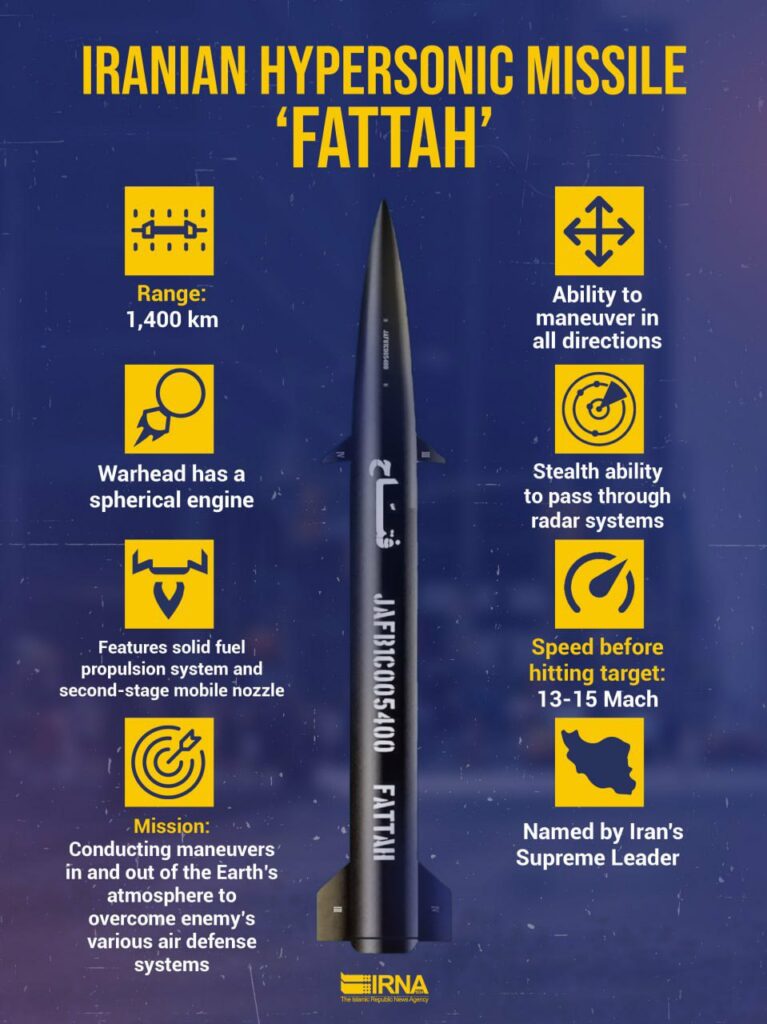Iran unveils new ‘hypersonic missile’
Context:
As tensions over its nuclear programme with the United States remain high, Iran said on Tuesday that it has developed a hypersonic missile that could fly at 15 times the speed of sound, adding a new weapon to its arsenal.
 Fattah Hypersonic Missile
Fattah Hypersonic Missile
- Iran’s Islamic Revolutionary Guard Corps (IRGC) developed the Fattah hypersonic long-range ballistic missile.
- The Iranian Leader of the Islamic Revolution chose the name “Fattah,” which in Arabic means “victory.”
- Fattah is a two-stage, precision-guided, solid-fueled missile with a 1400 km range.
- Its maximum speed is between Mach 13 and Mach 15.
- The missile has a moveable nozzle that allows it to travel in all directions as well as a spherical engine that burns solid fuel.
- Even at supersonic speeds, Fattah may manoeuvre in and out of the environment, making it challenging to catch.
- Iran believes that it can outmanoeuvre any missile defence system, including the Iron Dome, due to its excellent manoeuvrability and speed.
- It can also hit anti-ballistic missile defence systems.
- Fattah has AI capabilities, according to the IRGC Chief.
- The missile, which represents a significant advancement in Iranian missile technology, was unveiled on November 10, 2022.
- A system that could intercept the Fattah missile would take decades to create, according to Brigadier General Amir Ali Hajizadeh, the commander of the IRGC-ASF.
Hypersonic Missiles
- Projectiles that can travel at least five times the speed of sound, or Mach 5, are considered hypersonic missiles. That translates to 6,174km (3,836 miles) per hour or 1.7km (1.05 miles) every second.
- These speeds are previously attained by several ballistic missiles, but this new class of weapon stands apart from the competition because it can follow a less predictable path to its target after reentering the atmosphere.
- Due to this, it is much more challenging to be picked up by radar systems and destroyed by defence shields.
- More nations are attempting to develop hypersonic weapons in the hopes that they will provide them with a military advantage, but the obstacles are still great.
- One reason is that friction from the upper atmosphere generates extraordinarily high temperatures, and the missile’s rapid speed creates superheated particles that surround it and interfere with radio communications.
- Only Moscow is believed to have conducted a combat test of any of the hypersonic missiles that China and Russia have so far showcased. Although it lags slightly behind its two rivals, the United States has also tested hypersonic missiles.





